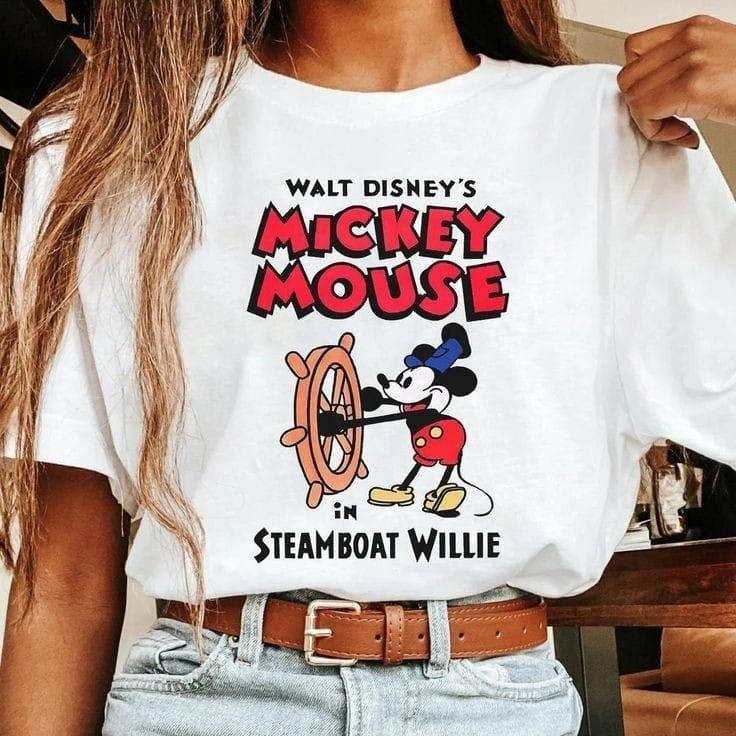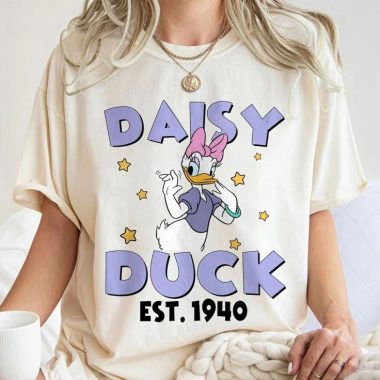Introduction
Fashion is more than the sum of its stitches; it is a living chronicle of humanity’s aspirations, beliefs, and creative spirit. From the utilitarian hides draped around our prehistoric ancestors to the digital couture adorning avatars in virtual realms, fashion has continuously reinvented itself, reflecting the currents of social change, technological breakthroughs, and individual expression. This comprehensive exploration delves into fashion’s ancient origins, its role as a repository of cultural memory, the psychological interplay between attire and identity, the seismic impacts of industrial and digital revolutions, the frontiers of material science, the moral imperatives of sustainability, fashion’s voice as a catalyst for social and political discourse, its colossal economic architecture, the dawn of virtual wardrobes, and the visionary horizons that await the next chapters of sartorial innovation.
Ancient Foundations: From Protection to Adornment
Long before needles and looms emerged, early humans instinctively sought refuge from harsh climates by draping themselves in animal pelts, layered hides, and woven grasses. These primitive coverings, born of necessity, also bore the first hints of ornamentation. Scraps of mineral‑pigmented clay painted on hides, pendants carved from bone or shell, and rudimentary weaving patterns served as symbols of tribal affiliation, spiritual protection, or social rank. As communities transitioned from nomadic foragers to settled agrarians, the domestication of flax, cotton, and sheep paved the way for formal textile production. Spindles transformed raw fibers into threads, and upright looms wove those threads into fabrics that bore stripes, checks, and natural dye patterns. These early textiles functioned both as shields against the elements and as canvases of emerging aesthetic sensibility, sowing the seeds of fashion’s dual essence: functionality intertwined with expressive ornament.
Cultural Tapestries: Textiles as Living Memory
Across continents and centuries, traditional garments have served as vibrant repositories of collective memory. In the Andean highlands, Quechua weavers spin alpaca and sheep’s wool into vividly colored ponchos whose geometric motifs recount ancestral legends, agricultural rhythms, and sacred cosmologies. West African artisans craft bògòlanfini, known in the West as mud cloth, by weaving cotton and dyeing it with fermented mud; its abstract symbols encode community proverbs, rites of passage, and spiritual allegories. The Japanese kimono evolved from utilitarian robes into a codified art form, where the fabric’s weave, color palette, and obi knot communicate seasonality, marital status, and personal taste. In India, block‑printed cottons from Rajasthan preserve centuries‑old floral and paisley motifs, each stamped with a hand‑carved wooden block that links craftsperson to cultural heritage. These living textiles endure not as static artifacts but as dynamic art, reinterpreted by each generation while honoring the ancestral threads that bind past to present.
The Psychology of Dress: Enclothed Cognition and Self‑Narrative
Fashion operates as a potent semiotic system, a visual language through which individuals broadcast identity, mood, and aspiration. Each silhouette becomes a sentence, each color a nuanced inflection. A sharply tailored blazer articulates authority and precision, while an unfettered chiffon gown whispers of romance and creative abandon. Color psychology deepens this discourse: bold reds ignite confidence and visibility, serene blues evoke trust and introspection, earthy greens suggest harmony with nature. Textural shifts add further layers of meaning—sleek satin signals luxury, raw denim evokes resilience, and tactile knits convey warmth and comfort. Accessories act as expressive punctuation marks—a sculpted cuff can subvert a conservative ensemble, and a meticulously folded scarf can underscore elegance with the faintest of flourishes. Psychological research into enclothed cognition demonstrates that the very act of donning specific attire can alter thought patterns, emotional states, and performance. Thus, the daily ritual of dressing becomes an act of self‑creation, where the body and its covering form a reciprocal dialogue of identity.
Industrial Revolutions: Democratizing Style and Its Discontents
The eighteenth century’s Industrial Revolution unleashed a cascade of transformation in textile manufacturing. Mechanized looms and steam‑powered mills churned out yards of fabric at speeds unimaginable to hand weavers. The invention of the sewing machine further accelerated garment production, birthing the ready‑to‑wear industry. Department stores, with their grand arcades and eye‑catching window displays, beckoned the burgeoning middle classes into curated realms of aspiration. Mail‑order catalogs extended the reach of fashion to rural outposts, knitting far‑flung communities into a shared sartorial dialogue. This newfound accessibility eroded barriers of class but also engendered a culture of disposability: the swift turnover of seasonal trends produced mountains of textile waste and eroded the value of craftsmanship. In parallel, haute couture houses fortified their emphasis on bespoke tailoring, hand‑stitched embellishments, and artisanal exclusivity—positioning their creations as enduring refutations of mass‑market ephemera.
Synthetic Breakthroughs: Innovation and Environmental Reckoning
The twentieth century’s advent of synthetic fibers—rayon, nylon, polyester—revolutionized affordability, durability, and ease of care. Nylon’s debut in the late 1930s democratized hosiery and lingerie, while polyester blends offered wrinkle resistance and vibrant prints at low cost. These innovations expanded fashion’s creative palette but concealed an environmental toll that only surfaced decades later: non‑biodegradable microplastics, reliance on petrochemicals, and mountains of discarded garments. As awareness grew, the limitations of convenience over conservation became evident, prompting a reevaluation of synthetic dominance and reinvigorating interest in natural fibers, closed‑loop recycling, and biodegradable alternatives.
Material Alchemy: Smart Textiles and Biofabrication
In the twenty‑first century, material science and fashion design have merged in breathtaking ways. Nanocoatings render fabrics self‑cleaning and water‑repellent, reducing laundering frequency and resource consumption. Phase‑change materials dynamically absorb or release heat, regulating microclimates around the body. Conductive threads woven into textiles transmit biometric data—heart rate, respiration, posture—to wearable devices, bridging fashion and health. Biofabrication labs cultivate bacterial cellulose or spider‑silk proteins into fibers that combine remarkable strength, flexibility, and biodegradability. Three‑dimensional knitting machines translate digital patterns into seamless, custom‑fitting garments with minimal waste. Virtual reality fitting rooms overlay digital garments onto live video feeds, streamlining online shopping and cutting costly returns. Blockchain traceability systems log each fiber’s journey—seed to spool to store—ensuring transparency in complex global supply chains. This convergence of science and sartorial art envisions garments as dynamic interfaces that respond to wearer, environment, and even the wearer’s physiological state.
The Sustainability Imperative: Toward Circular Fashion
As evidence of fashion’s ecological footprint intensifies—cotton’s vast water consumption, polyester’s microplastic shedding, the toxic effluent from dyehouses—the industry confronts an urgent moral reckoning. In response, a movement toward sustainability and circularity has taken root. Regenerative agriculture revitalizes soil carbon and biodiversity in fiber fields. Closed‑loop dyeing systems capture and purify water and pigments for reuse. Circular design principles mandate that garments be created for durability, repairability, and recyclability, extending product lifecycles and redefining waste as resource. Rental platforms and peer‑to‑peer resale marketplaces decouple style from ownership, fostering community and reducing single‑use consumption. Upcycling initiatives transform textile scraps into artful new creations, blending environmental stewardship with creative reinvention. Artisanal cooperatives guarantee fair wages and safe conditions while preserving traditional crafts. Digital tools empower consumers to trace supply chains and align their purchases with values of ecological and social responsibility. Together, these practices chart a path toward fashion that honors both people and planet.
Fashion as Activism: Wearable Protests and Collective Solidarity
Throughout history, attire has served as a potent instrument of protest and social solidarity. Early twentieth‑century suffragettes donned white dresses and distinctive sashes to unify their campaign for women’s voting rights. During the Civil Rights Movement, African American communities embraced natural hair and African‑inspired prints as acts of cultural reclamation and defiance. The punk subculture of the 1970s weaponized DIY aesthetics—safety pins, torn fishnets, provocative slogans—to challenge political and economic orthodoxy. In contemporary times, runway shows foreground diverse bodies, gender identities, and ages to confront exclusionary beauty norms. Graphic T‑shirts emblazoned with protest slogans turn everyday attire into mobilizing tools. Capsule collections direct proceeds to climate justice, gender equity, and humanitarian causes. Virtual “mend‑in” events and online clothing swaps double as forums for discourse on consumption habits and community building. In these contexts, fashion transcends ornament to become a living manifesto, where garments broadcast collective values and galvanize change.
Economic Ecosystem: The Vast Architecture of Global Fashion
Fashion represents a multitrillion‑dollar global enterprise, spanning raw material cultivation, textile manufacturing, logistics, retail, and digital marketplaces. Agricultural regions—from the American cotton belt to Central Asia’s fiber fields—supply natural fibers, while petrochemical hubs feed polyester production. Manufacturing centers in Bangladesh, Vietnam, and Ethiopia offer competitive labor costs, even as luxury ateliers in Paris, Milan, and New York command premium price points through heritage craftsmanship. E‑commerce platforms and brand‑owned digital channels dismantle geographic barriers but intensify competition, driving brands to optimize supply chains through data analytics that forecast trends, personalize marketing, and reduce inventory risk. Seasonal fashion weeks and trade fairs orchestrate buying calendars, though “see now, buy now” models compress runway‑to‑retail timelines. Geopolitical volatility, trade disputes, and climate‑induced disruptions prompt brands to diversify sourcing, near‑shore production, and invest in resilient micro‑factories. Simultaneously, independent designers and small‑batch artisans harness on‑demand digital fabrication to offer bespoke, localized offerings. Within this intricate web, agility, transparency, and ethical stewardship are indispensable for long‑term resilience and growth.
Digital Couture: The Metaverse and Virtual Wardrobes
As virtual environments proliferate, fashion has leapt into the metaverse. Non‑fungible tokens (NFTs) authenticate exclusive digital wearables that avatars flaunt across gaming platforms, social hubs, and immersive experiences. Major fashion houses stage interactive, avatar‑driven runway presentations in digital realms, reaching global audiences without geographical constraints. Augmented reality applications overlay virtual garments onto real‑world imagery, allowing consumers to experiment with looks without physical samples. Blockchain ensures the provenance and scarcity of both digital and physical pieces. “Phygital” collections bridge these spheres—purchase a tangible garment and receive its digital twin, granting access to online communities and future drops. This convergence redefines ownership, creativity, and self‑expression, as wardrobes expand from closets to servers and pixels become as significant as threads.
Envisioning the Next Frontier: Personalized, Predictive, Planetary
Looking ahead, fashion’s next evolution will integrate hyper‑personalization, predictive analytics, and planetary health into its very fiber. Artificial intelligence stylists will curate wardrobes calibrated to individual body metrics, climate data, lifestyle rhythms, and ethical priorities—dispatching garments precisely when needed and orchestrating their return for recycling at end of life. Biofabrication labs will cultivate sustainable fibers from algae, bacterial cellulose, and lab‑grown collagen, replacing resource‑intensive crops and petrochemical synthetics. Wearable biosensors embedded in textiles will monitor health parameters—sleep quality, stress indicators, UV exposure—and interface with healthcare platforms for real‑time insights. Distributed micro‑factories powered by renewable energy will enable on‑demand, hyper‑local production, slashing transportation emissions and excess inventory. Blockchain‑governed cooperatives may oversee fashion collectives, democratically sharing profits and creative control among designers, artisans, and consumers. In this envisioned ecosystem, fashion transcends commerce to become an integrated system of well‑being, cultural exchange, and ecological regeneration—where each garment, whether hand‑woven, 3D‑printed, or digitally rendered, contributes to a healthier planet and more vibrant human tapestry.
Conclusion
From the flickering campfires of our earliest ancestors to the pixel‑lit screens of tomorrow’s metaverse, fashion endures as an eloquent testament to humanity’s drive for protection, identity, and beauty. It mirrors our collective histories, amplifies our personal narratives, and propels us toward new frontiers of innovation and inclusion. As we confront the pressing challenges of climate change, social inequity, and technological upheaval, the choices we make—about materials, labor practices, design ethics, and cultural respect—will shape the legacy of fashion for generations yet unborn. By weaving together sustainable innovation, ethical stewardship, and boundless creativity, we can ensure that the tapestry of fashion remains ever‑expanding, infusing our shared future with color, purpose, and possibility.



